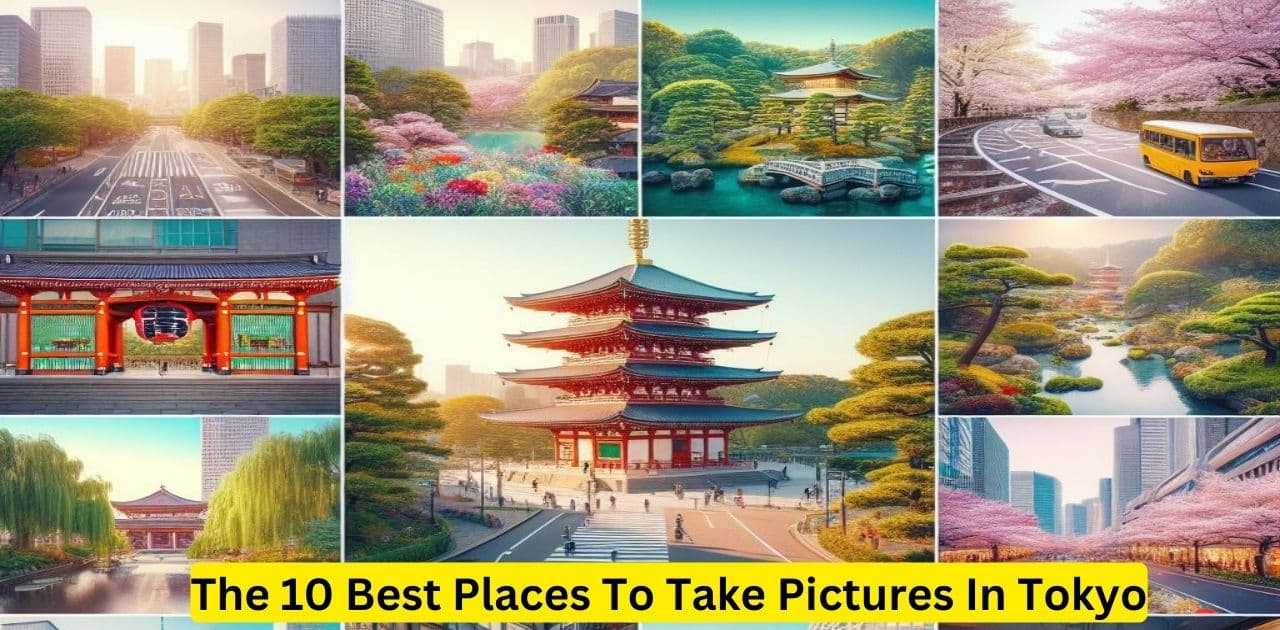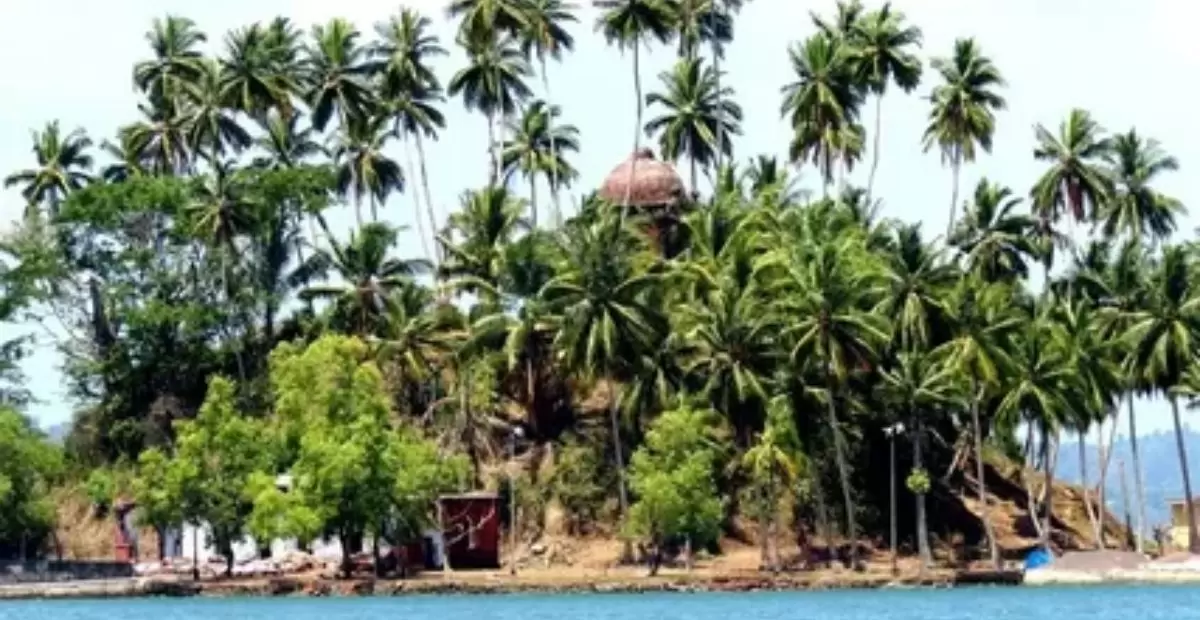Forget the selfie stick – Tokyo demands a real camera (or at least a phone with serious photography chops). From neon-drenched skyscrapers to ancient temples whispering secrets in verdant gardens, this electrifying metropolis is a photographer’s playground.
Ditch the guidebooks and get ready to discover ten unique angles on Tokyo, guaranteed to ignite your Instagram and leave your friends wide-eyed with wanderlust.
The 10 Best Places .To Take Pictures In Tokyo
Asakusa:
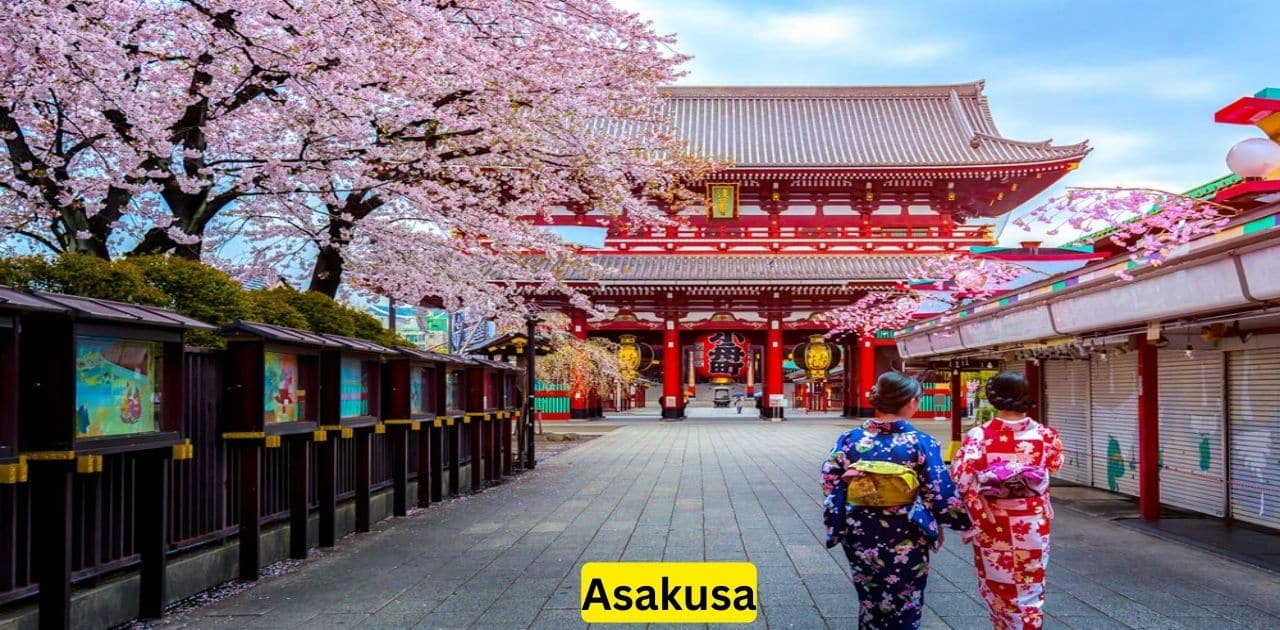
- Take advantage of the opportunity to try on a beautiful kimono and take stunning pictures in front of the iconic Kaminarimon gate. The contrast of traditional Japanese clothing and the large red lantern makes for amazing photos.
- Explore the hidden gems of Asakusa, such as the charming backstreets filled with traditional shops and cozy cafes. Capture scenes of daily life and interesting traditional facades.
- Visit the Asahi Beer Hall, known for its unique golden flame-shaped structure, and capture this one-of-a-kind architectural masterpiece against the Tokyo skyline.
- It is one of the top places in Tokyo to take iconic pictures.
- Take a boat ride along the Sumida River and capture breathtaking views of Tokyo’s skyline from the water. The Sensoji Temple and Skytree make a great backdrop.
- Experience a traditional Japanese photoshoot dressed in kimono or yukata and have your name beautifully hand-written by a skilled calligrapher for an authentic cultural experience and photos.
- Visit early in the morning to capture photos of Sensoji Temple and the surrounding area with fewer crowds. The morning light is also excellent for photos. Try to get a shot with the rising sun behind the temple.
- Climb up to the top of the Asakusa Culture Tourist Information Center for a panoramic view of Asakusa. This free observation deck allows you to get aerial shots of Sensoji Temple and surrounding neighborhoods. The Skytree looming in the background makes for epic photos.
Hinjuku Gyoen Oasis:
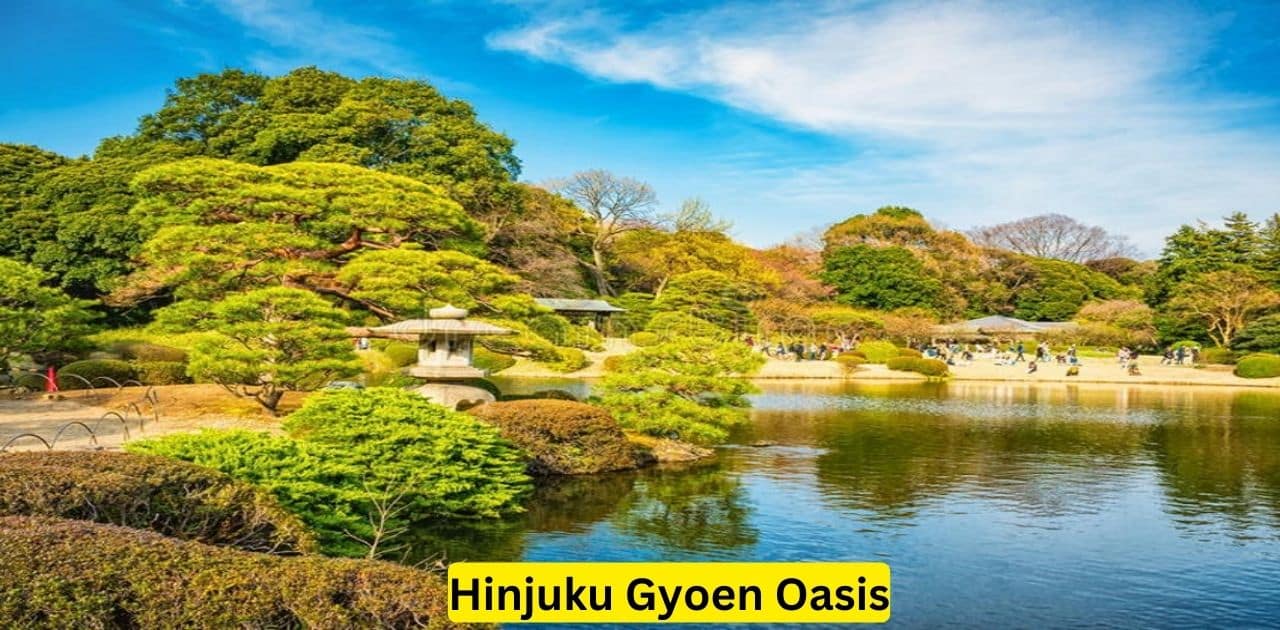
- Visit during cherry blossom season in spring to capture the park’s over 1,000 cherry trees in full bloom. The somei yoshino trees blossoming over the central pond make an iconic scene.
- Compose shots using the French formal garden’s symmetrical lawns, orderly paths and fountains as subjects. The vibrant green lawns contrast nicely against the stone and brick designs.
- Find unique perspectives of the Taiwan pavilion and adjacent pond by walking all around it. Reflections of the pavilion in the water make great photos.
- Use the traditional Shinto shrines and temples scattered throughout as photogenic subjects, especially with cherry blossoms in frame.
- Capture the changing colors in the English landscape garden during autumn foliage season. Bridge shots over the stream look lovely.
- Visit on weekdays to avoid crowds and take unobstructed landscape and flower photos. The greenhouses also make good subjects when less busy.
- Take portraits along the scenic paths arched over with plum or cherry trees in bloom. The Taisho Pond with willow trees also makes a nice backdrop.
- Shoot wide scenes of the sprawling Japanese garden’s ponds and pagodas with bridges and trees leading the eye through the frame.
- Look for creative framing using branches, trellises, arches and other structures in the meticulously manicured grounds.
- Come near opening or closing time to photograph the grounds with soft, glowing light during the Golden Hour. The low light makes scenes more atmospheric.
Tokyo Tower’s Retro Charm:
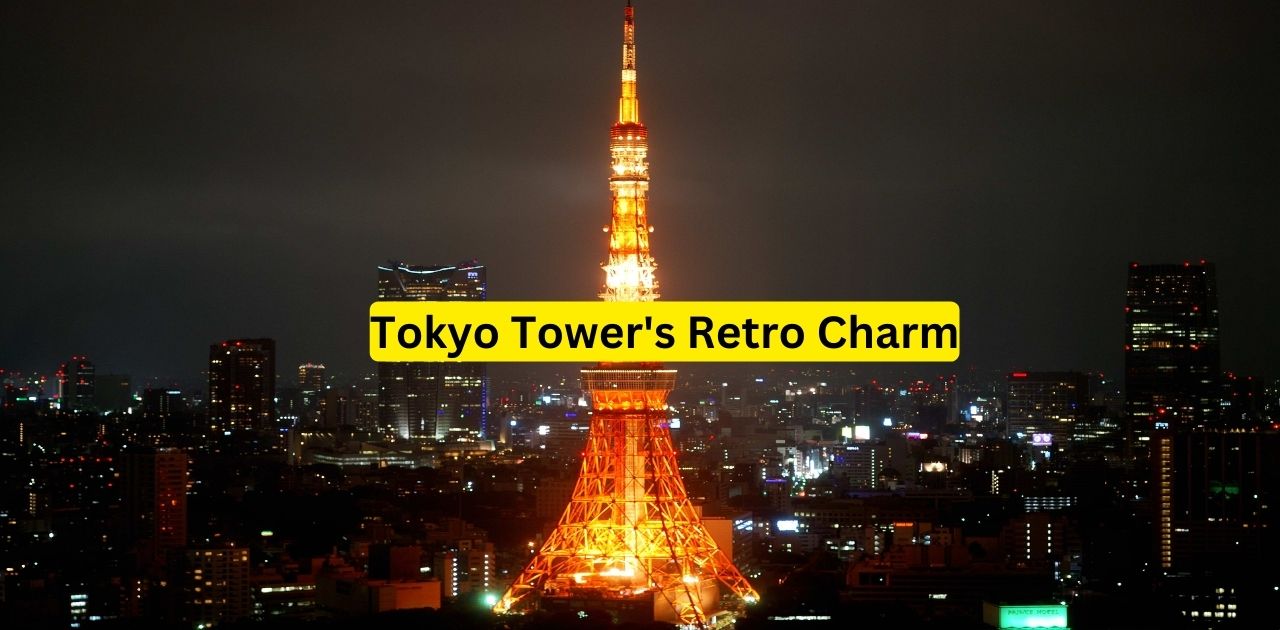
- Take photos of the tower from observatory decks during the day for panoramic cityscapes with Mount Fuji in the distance.
- Capture the tower at night when it’s lit up in different colors for a neon-bright spectacle against the night sky.
- Photograph the lattice-style architecture and steel frame up close for patterns, shapes and textures.
- Get shots looking up from the base of the tower to emphasize its towering height.
- Include the tree-lined courtyard in foreground shots for contrast of modern and nature.
- Visit the FootTown area for whimsical photo ops like the cottage-shaped Tokyo Tower Cream Puff Factory.
- Ride the elevator up for mid-level shots looking down through the steel beams at ant-like people below.
- Capture reflections of the tower in the mirrored walls of surrounding buildings.
- Shoot through fences or gates for layered geometric compositions.
- Include couples or families enjoying the area to add human interest and a sense of scale. The retro surroundings will give shots a nostalgic quality.
Harajuku’s Kaleidoscope:
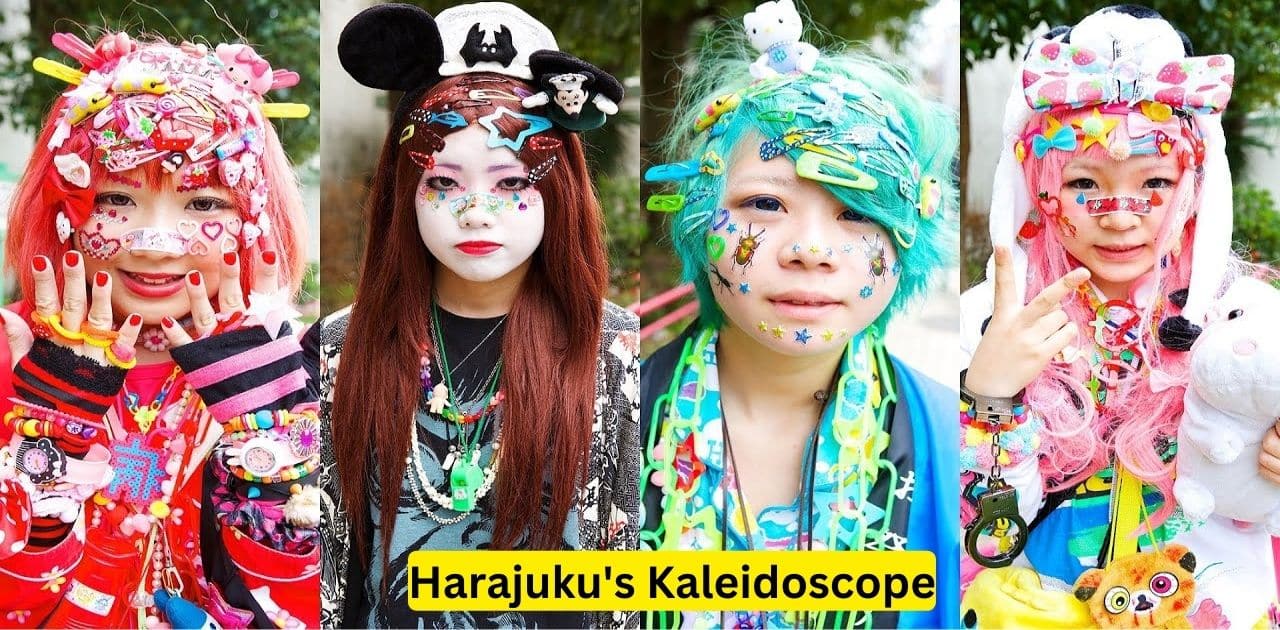
- Visit on weekends to see the most colorful fashion when Harajuku is at its liveliest.
- Shoot portraits of stylish individuals or groups who give consent along bustling Takeshita Street.
- Capture wide shots of the crepe stands and shops selling cute Kawaii merchandise.
- Compose detail shots of accessories, shoes, makeup and hairstyles that catch your eye.
- Photograph the facade of 6%DOK3, the cotton candy burrito shop, for its rainbow colors.
- Head to Yoyogi Park on Sundays to see Japanese rockabilly dancers.
- Explore backstreets like Cat Street for boutiques in converted houses.
- Contrast timeless Meiji Shrine with modern extreme style in the same frame.
- Look for creative visual rhythms or patterns in the eclectic mix of styles.
- Talk to people you photograph to better understand the diverse Harajuku subcultures.
Omoide Yokocho’s Boozy Backstreets:
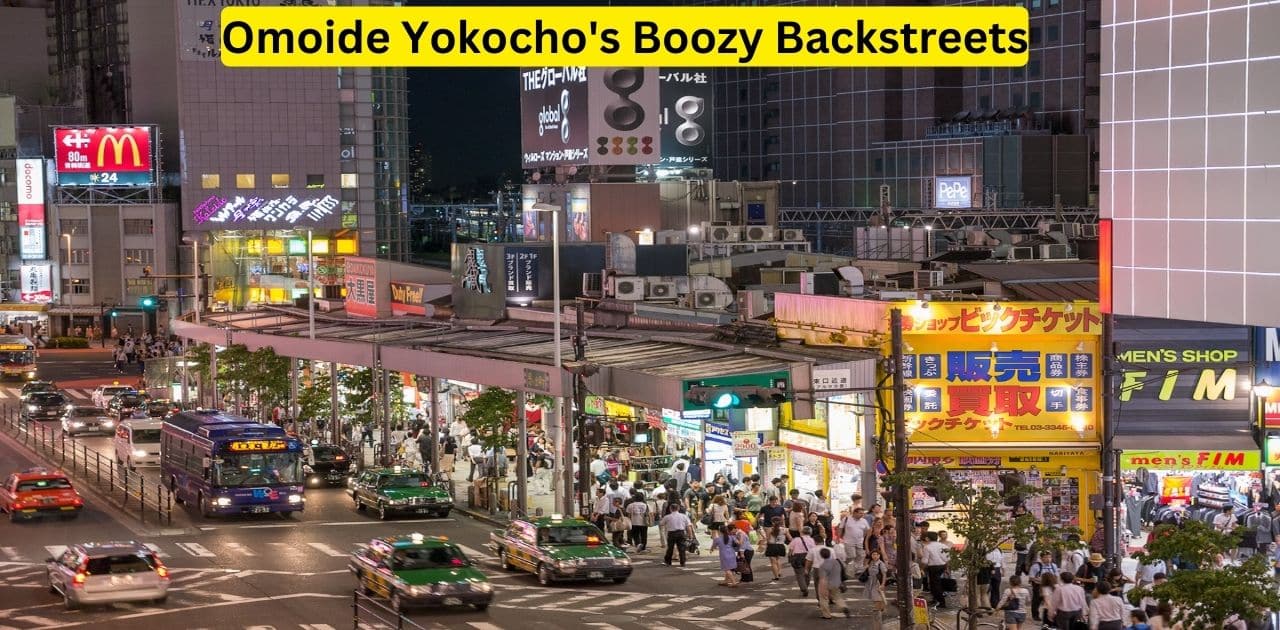
- Shoot in the early evening when the lanterns and neon signs light up to capture the nostalgic Showa-era ambience.
- Photograph slices of bar scenes through open doorways – focused on bottles, bartenders, customers.
- Capture patrons spilling into the alley, interacting and smoking under the strung lights.
- Move to the far end of the alley and use a telephoto lens to compress the perspective of the crowded lane.
- Focus on restaurant facades and features like sliding-door entrances, noren curtains, menus and displays of food samples.
- Shoot bar interiors crammed with memorabilia – quirky collectibles covering every inch.
- Include hanging red lanterns in shots to accentuate the old-school vibe. Shoot at dusk for moody lighting.
- Photograph the crowds squeezing through the narrow walkways to portray the bustling atmosphere.
- Talk to patrons and proprietors to get permission for portraits that capture the community spirit.
- Use wider apertures for shallow depth of field – backgrounds blurred into moody bokeh.
Golden Gai’s Liquid Tales:
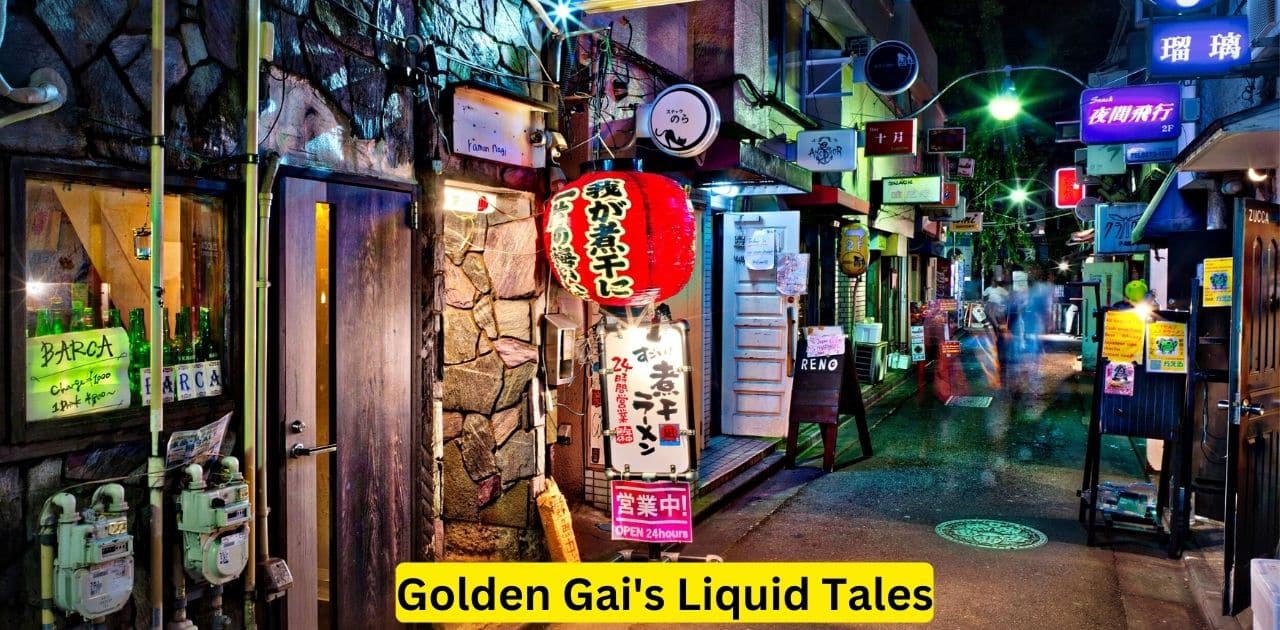
- Wander the maze of alleys and photograph the chaotic, collage-like bar facades and entrances.
- Shoot intimate portraits of bartenders mixing drinks and chatting with regulars. Ask permission first.
- Focus on the details – hand-written signs, stacks of glasses, scattered memorabilia.
- Capture customers crammed into the stand-up bars and their lively interactions.
- Go at night to photograph glowing neon signs reflecting in puddles on the narrow lanes.
- Move through the shadows and light – photographing silhouettes and color.
- Talk to locals and get shots of them hanging out or singing in the bars.
- Kneel down for shots along the alley floors to portray the area’s immersive scale.
- Fill frames with collections of bottles, glasses, or decor to convey individual bar personality.
- Use fast lenses and high ISOs for low light shots inside dimly lit bars. Capture moody atmosphere.
Meiji Jingu’s Verdant Reverie:
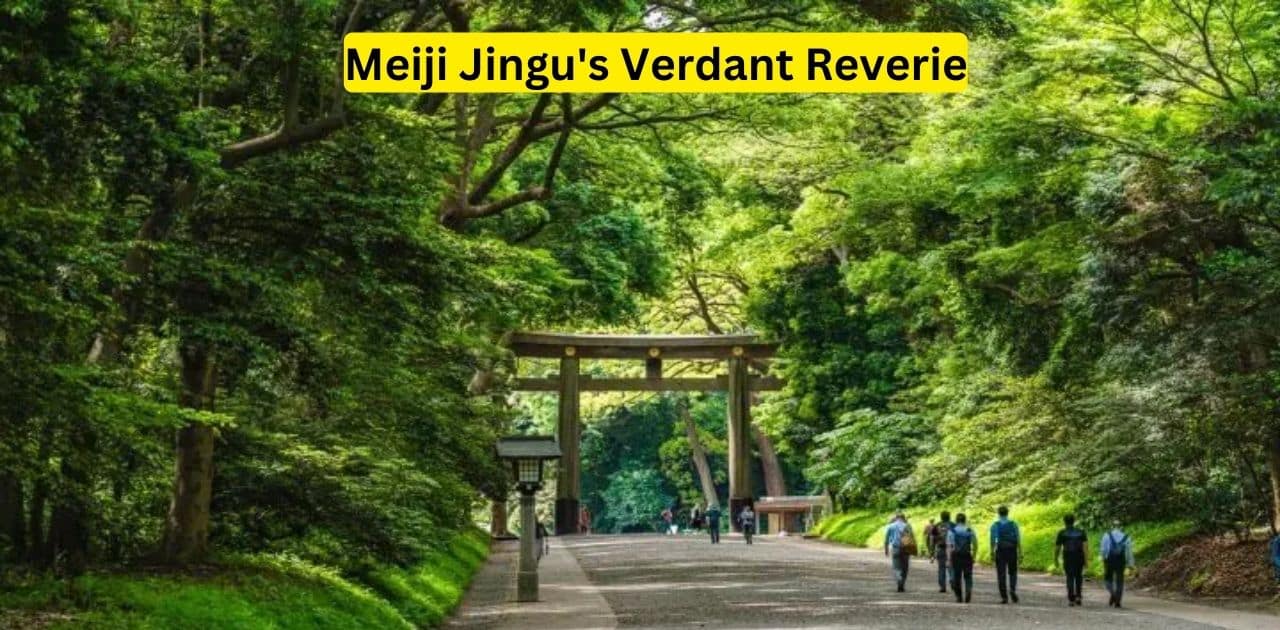
- Walk through the towering torii gates along the forested path leading to the shrine to capture their towering scale.
- Photograph rows of sake barrels as offerings to the gods to highlight tradition.
- Shoot the main shrine building through the columns for a framed composition.
- Capture reflections of the arched bridges and shrine in the waters of the purification fountain.
- Contrast the natural textures of wooden buildings with forest.
- Focus on the Details of fortunes tied to trees and purification ladles.
- Shoot wide perspectives of the expansive wooded grounds to portray its grand, spiritual atmosphere.
- Time your visit for peak fall foliage or spring blossoms.
- Capture candid moments of people worshipping, praying, or contemplating.
- Frame shrine structures behind the vermillion torii gates for a bright focal point.
Yoyogi Park’s Breathing Room:
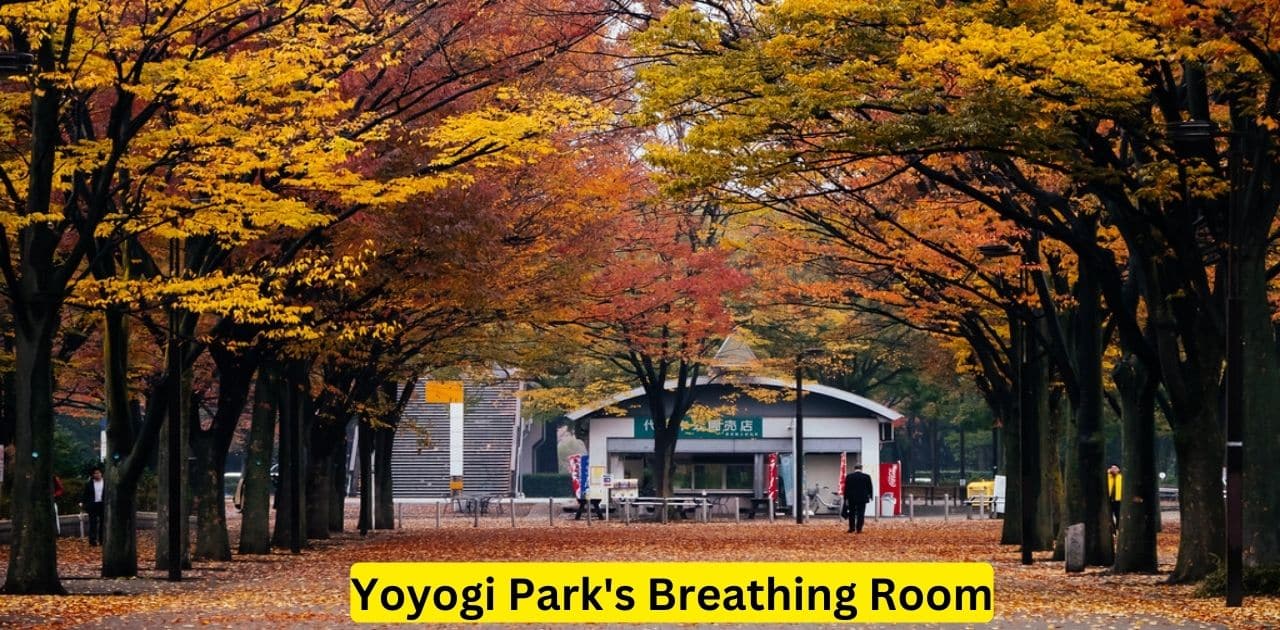
- Capture weekend crowds of musicians, dancers, and costumed characters that congregate in the open spaces.
- Shoot wide landscape perspectives of the large grassy lawns with city skyscrapers visible in the background.
- Photograph smaller scenes like picnics, yoga sessions, and dog walks happening around the grounds.
- Focus on cherry blossoms in spring or fall foliage for seasonal color.
- Time it around events like outdoor concerts or festivals for lively crowd shots.
- Wander forested paths to photograph Japanese gardens and temples with foliage.
- Incorporate exercise equipment, athletic courts, and jogging trails to portray the park’s active uses.
- Shoot through frames like trees, arches, and colonnades for layered compositions.
- Capture small moments of human connection and expression.
- Return on weekdays for serene, people-less nature shots.
Shibuya Crossing
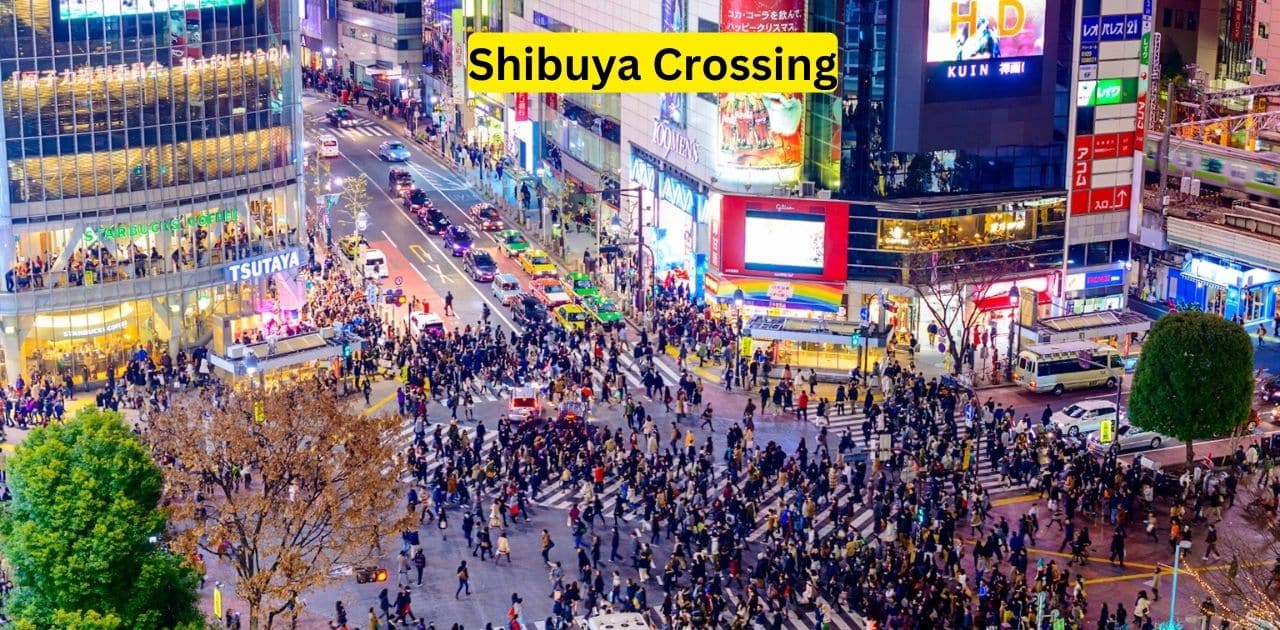
- Get a bird’s-eye view from the Starbucks on the 2nd floor of Magnet by Shibuya 109 for an epic overhead shot.
- Shoot the sea of pedestrians from street level with neon signs and giant video screens in the background.
- Photograph people mid-stride as they briskly criss-cross each other from all directions.
- Set up near the station exit and capture commuters pouring out in waves during rush hour.
- Try long exposures to creatively blur the movement and flow of pedestrians.
- Capture iconic symbols like the Shibuya 109 building, Shibuya Station signage, and bronze Hachiko statue.
- Shoot from within the crowds to convey the sense of scale and busyness.
- Come at dusk to shoot the crossing lit up in vivid neon colors.
- Return on New Year’s Eve to photograph the famous countdown celebration.
- Talk to people and get fun posed shots – selfies, jumping shots, group shots that show youthful energy.
kichijoji
- Capture the buzzing atmosphere along Sun Road Shotengai shopping street. Photograph bustling storefronts and street food stalls.
- Explore Harmonica Yokocho’s narrow alleys lined with tiny bars and restaurants. Shoot night scenes lit by neon signs and lanterns.
- Photograph locals relaxing at Inokashira Park. Frame Mt. Fuji behind cherry blossom trees or fall foliage around the lake.
- Visit the Ghibli Museum for whimsical architecture and exhibits from the famed anime studio. Capture the robot from Castle in the Sky out front.
- Wander the peaceful grounds of Kyu Asakura House, a preserved Japanese home with traditional gardens and architecture.
- Shoot street scenes in vintage Shimokitazawa. Photograph indie boutiques, cafes, street art and theater marquees.
- Capture the upscale yet quirky fashion of Kichijoji Parco. Focus on details of storefronts, stylish shoppers and creative window displays.
- Experience the Japanese temple market at Jindaiji and photograph the traditional wares.
- Visit during spring or fall and frame cherry blossoms or autumn leaves in your shots of temples, shrines, parks and streets.
FAQ’s
Where can I take pictures in Tokyo?
- Shibuya Crossing: This iconic intersection, with its hundreds of pedestrians crossing simultaneously, is a must-see for any photographer. Capture the controlled chaos or find a unique angle to showcase the city’s vibrant energy.
- Shinjuku Gyoen National Garden: Escape the urban jungle and find serenity in this beautiful park. Capture the seasonal flowers, ponds, and traditional Japanese gardens.
- Tokyo Tower: Inspired by the Eiffel Tower, Tokyo Tower offers stunning views of the city from its observation deck. Capture panoramic shots or photograph the tower itself against the Tokyo skyline.
- Harajuku: This district is known for its quirky fashion and street style. Wander down Takeshita Street to capture the latest trends or photograph the unique personalities of Harajuku’s cosplayers.
- Asakusa: This historic district is home to the Senso-ji Temple, the oldest temple in Tokyo. Capture the traditional architecture of the temple and the surrounding streets, or get a shot of the iconic red paper lanterns.
What is the most photographed street in Tokyo?
Shibuya Crossing takes the crown for the most photographed street in Tokyo, thanks to its unique energy and visual spectacle.
What is the most famous picture in Japan?
- “Hachi Waiting for Master” is arguably the most famous picture in Japan. It depicts Hachiko, a loyal Akita dog, waiting for his owner at Shibuya Station even after his owner’s death. The story and the statue in his honor at the station have become national symbols of loyalty and devotion.
What is the nicest area in Tokyo?
“Nicest” is subjective, but some popular and charming areas in Tokyo include:
- Ginza: Tokyo’s upscale district, known for its high-end shops, Michelin-starred restaurants, and elegant architecture.
- Meguro: A residential area with a canal lined with cherry blossom trees, offering a peaceful escape from the city center.
- Kichijoji: A vibrant area with a mix of shops, cafes, and temples, known for its laid-back atmosphere and beautiful Ghibli Museum.
Is Tokyo cheap or expensive?
- Tokyo is an expensive city, especially compared to other Asian destinations. However, there are ways to budget your trip, such as staying in hostels or guesthouses, eating at local restaurants, and using public transportation.
Where is Mt Fuji from Tokyo?
- Mt. Fuji is located about 80 kilometers southwest of Tokyo. You can see it from several vantage points in the city on a clear day, or take a day trip to get closer to the iconic mountain.
Conclusion,
Tokyo offers many amazing spots to take cool photos. Iconic places like Shibuya Crossing, Sensoji Temple, and Tokyo Tower let you capture the city’s energy and culture. Parks like Shinjuku Gyoen and Yoyogi have natural beauty.
Harajuku and Golden Gai have awesome street style. Meiji Jingu Shrine combines nature and traditions. With so many fun photo ops, from cityscapes to nature, Tokyo is a paradise for photographers. You’ll go home with amazing pictures and memories.
Recommended For Post: The 10 Best Places To Take Pictures In Tokyo
- 10 Most Expensive Place in El Salvador?
- Top 30 Most Visited Countries by International Tourist Arrivals 2024 ?
- Is Puerto Vallarta Safe? Crime Rate & Travel Warnings
